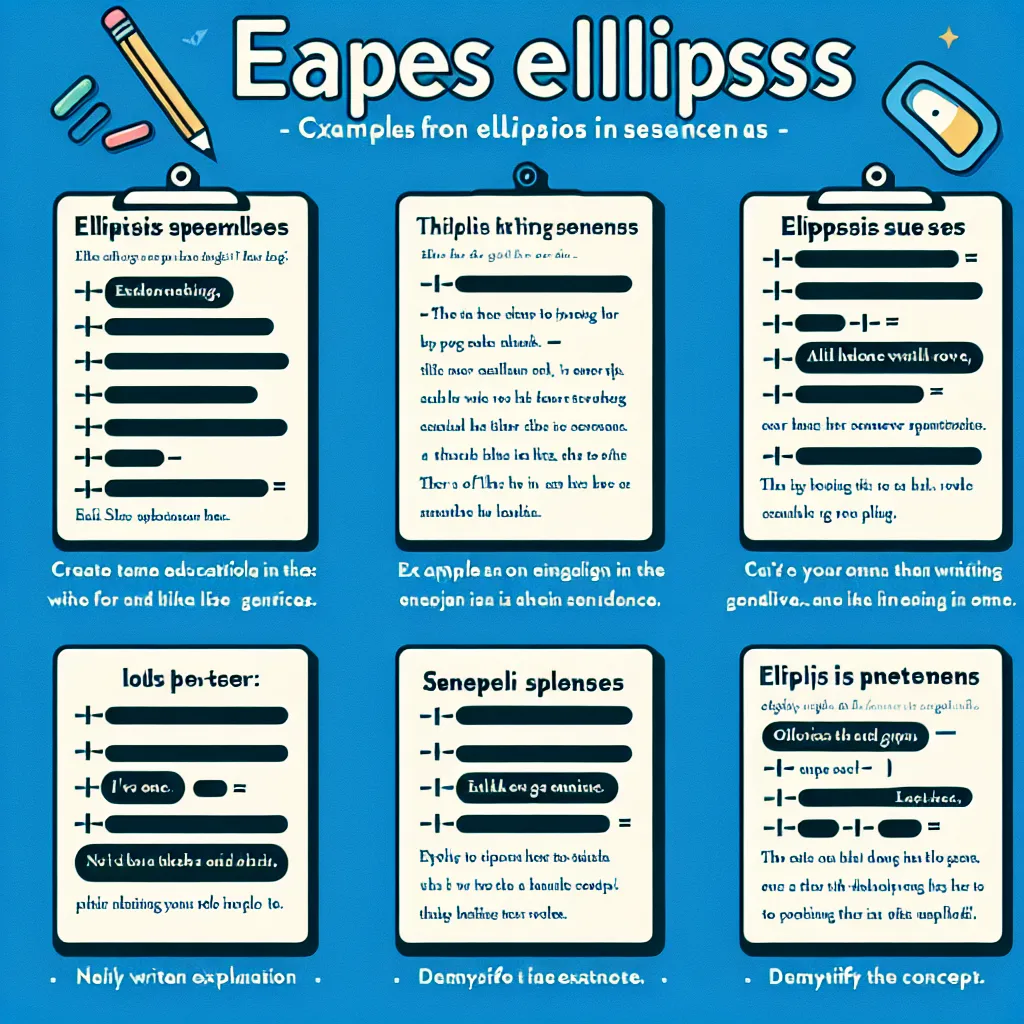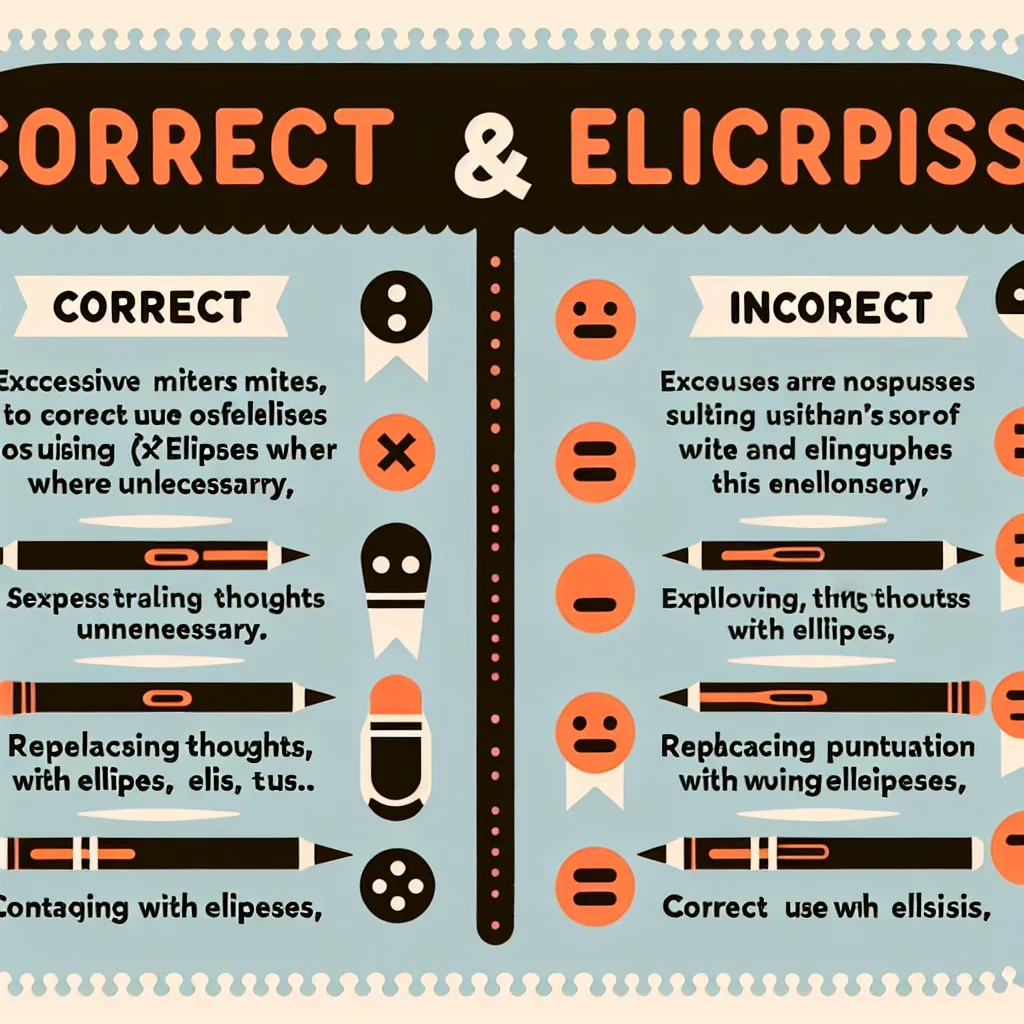Ellipsis is a powerful tool in English grammar that can add elegance and conciseness to your writing. Whether you’re preparing for the IELTS exam or simply looking to enhance your language skills, mastering the use of ellipsis can significantly improve your communication. In this guide, we’ll explore the intricacies of ellipsis and provide practical tips to help you use it effectively.
What is Ellipsis and Why is it Important?
Ellipsis, represented by three dots (…), is a punctuation mark used to indicate an omission of words or a pause in speech. It’s a versatile tool that can serve multiple purposes in writing:
- To show an incomplete thought
- To create suspense or trailing off in dialogue
- To indicate omitted text in quotations
- To suggest a pause or hesitation in speech
Understanding and using ellipsis correctly can make your writing more sophisticated and help you convey nuanced meanings more effectively.
 Ellipsis punctuation example
Ellipsis punctuation example
How to Use Ellipsis Correctly
1. Indicating Omitted Text
When quoting a source, you may want to leave out parts of the original text. Use an ellipsis to show where you’ve made omissions:
Original: “The quick brown fox jumps over the lazy dog and runs into the forest.”
With ellipsis: “The quick brown fox … runs into the forest.”
2. Creating Suspense or Trailing Off
In creative writing or dialogue, an ellipsis can indicate a character’s speech trailing off or create suspense:
“I’m not sure if I should tell you this, but…”
3. Showing Incomplete Thoughts
Use an ellipsis to represent an incomplete or interrupted thought:
“If only I had known earlier…”
4. Indicating Pauses in Speech
In dialogue, an ellipsis can represent a pause or hesitation:
“I… I don’t know what to say.”
Common Mistakes to Avoid
1. Overuse
While ellipsis can be effective, overusing it can make your writing appear unprofessional or indecisive. Use it sparingly for maximum impact.
2. Incorrect Spacing
The correct formatting of an ellipsis is three dots with spaces before and after, like this: ” … ” However, some style guides may have different requirements, so always check the specific guidelines you’re following.
3. Confusion with Other Punctuation
Don’t confuse ellipsis with other punctuation marks. For example, an em dash (—) is used for abrupt breaks in thought, while an ellipsis suggests a gentler trailing off.
 Common ellipsis mistakes
Common ellipsis mistakes
Practical Exercises to Perfect Your Ellipsis Use
To help you master the use of ellipsis, try these exercises:
-
Quote Trimming: Take a long quote and use ellipsis to shorten it while maintaining its core meaning.
-
Dialogue Writing: Write a short dialogue where characters use ellipsis to indicate pauses, hesitations, or trailing off thoughts.
-
Editing Practice: Review a piece of your own writing and identify places where an ellipsis could enhance the meaning or flow.
-
Style Guide Comparison: Compare how different style guides (APA, MLA, Chicago) handle ellipsis and practice formatting according to each.
Advanced Tips for IELTS Candidates
If you’re preparing for the IELTS exam, here are some advanced tips for using ellipsis:
-
In the Writing Task 2, use ellipsis sparingly to create a thoughtful pause in your argument:
“While some argue for stricter regulations, others believe in a more laissez-faire approach… The truth, as often, lies somewhere in between.” -
In the Speaking test, if you need a moment to gather your thoughts, you can use an ellipsis-like pause in your speech:
“The advantages of this approach are… well, there are several to consider.” -
In the Reading test, be aware that ellipsis might be used in texts to omit information. Make sure you understand the context around these omissions.
Conclusion
Mastering the use of ellipsis can add a layer of sophistication to your writing and speaking. By understanding its various applications and practicing regularly, you can enhance your communication skills significantly. Remember, like all punctuation tools, the key to effective use of ellipsis is moderation and appropriateness to the context.
Whether you’re aiming for a high score in IELTS or simply want to improve your English skills, perfecting your use of ellipsis is a valuable goal. Keep practicing, stay aware of common mistakes, and soon you’ll be using ellipsis like a pro!




